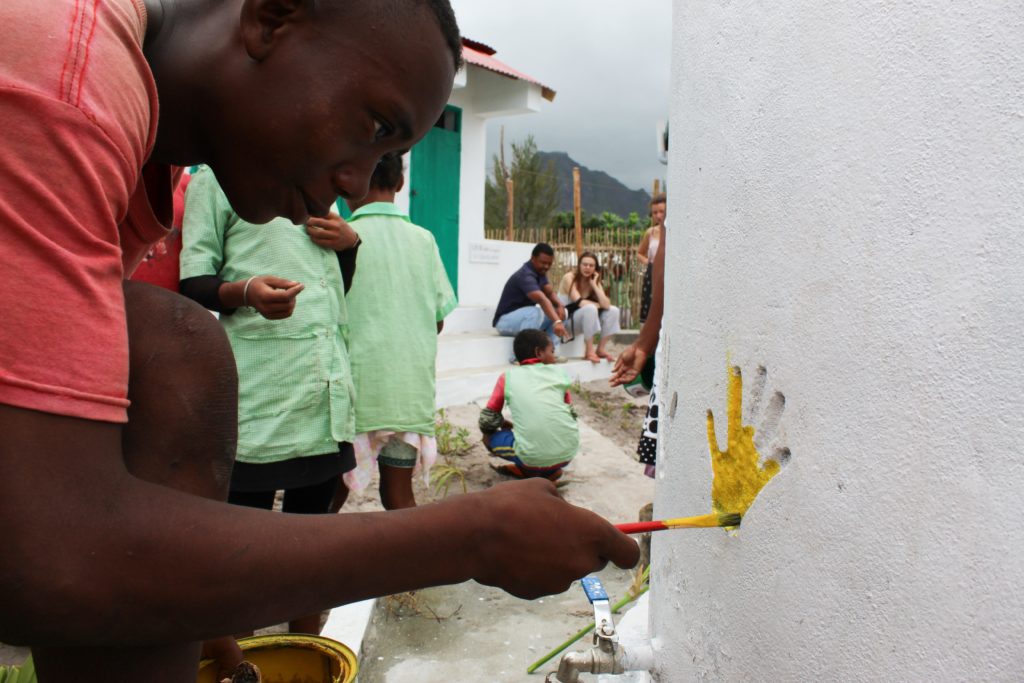Just about all facets of the tourism industry have suffered due to COVID-19. A look at many a website of tour operators will reveal businesses that didn’t take anyone anywhere for several months in 2020—and possibly won’t during the first few months of 2021.
However, the end of this year hasn’t represented a closed shop for several tour companies. After all, the great outdoors provides plenty of opportunities to feel at ease in socially distanced settings, as visiting remote communities does not trigger the concerns that being in crowded places may. So rural areas seemed to have fared better during the pandemic due to a general lower population density that helps reduce the spread of COVID-19.

Not surprisingly, businesses specializing in excursions to rural destinations seemingly could benefit from a boom in guests—if they play their cards correct. So have such companies been able to conduct successful tours in the midst of a pandemic?
Kirsi Hyvaerinen was able to find an answer firsthand. Hyvaerinen, a member of the Board of Directors at the Global Ecotourism Network, traveled overland between August and October from Montenegro to Finland and back again, and noted that rural tourism businesses that have resumed tours share the following tendencies:
- Have well-trained and fairly treated staff that provides good, timely and reliable information.
- Give travelers the right kind of visuals and key messages (e.g. why it’s the right time to go rural and stay longer)
- Enact well-respected health and safety-protocols (that are combined with some positive creativity)
Of course, even in the best of times, tourism businesses face numerous challenges in promoting their products. So now in the midst of the pandemic, what obstacles must tourism businesses overcome? Well, many of them are out of their control.
“The biggest challenges appear perhaps more at policy level,” notes Vicky Smith, a consultant and the founder of Earth Changers, a curated collection of positive impact tourism. “In the UK, for example, the Foreign, Commonwealth & Development Office currently advises British nationals against all but essential international travel, with the exemption of some listed countries and territories.”
“This renders travel insurance null and void for destinations not on the exempt list, even if airlines were flying and Covid would otherwise be covered,” Smith adds.
Even if travelers found a destination to which they wanted immediately to hop on a plane or train, going there might not be worth the hassle. “Additionally, the ‘exempt’ list is changing at least weekly, so consumers have lost confidence on where they can and can’t go, and don’t want to be faced with a quarantine on return, unknown and unplanned for on departure: it’s too disruptive to lives and is putting further downward pressure on any bookings,” Smith states.

Furthermore, Smith believes many tourism suppliers are fearful about opening up rural areas to visitors in this COVID-19 era. “Infection rates may be highest in capitals, through which tourists travel to reach rural areas—and they don’t want the infection being brought in, especially as rural environments might not have the hospital facilities or capacity to deal with cases,” she concludes.
So what advice would tourism professionals give to businesses working to promote a rural tourism product nowadays? Smith’s answer to that question is interesting—she recommends that they devote a lot of time to improving lives locally. “Rural businesses tend to be involved in and supportive of their communities,” she notes. An example is the Grootbos Private Nature Reserve in South Africa. Through its foundation, the reserve upped its free meals program, feeding between 1,700 to 2,300 people a day (largely children unable to attend school and receive school meals). “By June 18th, that added up to 100,000 means and by July 7th, 125,502!” Smith adds.
She also provides the example of NGO Seed Madagascar, a business that welcomes tourism via way of conservation volunteers, who have also been involved in local health initiatives. “Through the pandemic, they’ve [provided] vital support to the government, purchasing thermometers for local healthcare facilities, constructing fourteen hand-washing stations, and making and distributing hundreds of masks,” Smith explains.
“The pandemic has magnified and clearly demonstrated company values and behavior,” Smith believes. “We’ve all seen companies who have behaved irresponsibly in the pandemic, which will be remembered. Those who have stepped up will equally be remembered for their help. This isn’t a cynical PR play, it’s organizations staying true to their values of supporting local people and places, which they’ve always done, and now it’s virtually understood.”
Finally, further advice about how to run a tourism business in the COVID-19 era comes from Ariane Janer, a sustainable tourism consultant who serves as the technical director of Instituto Homo Caballus, an NGO and equestrian center (as well as a business which has shut down and reopened in the midst of the pandemic):
- Make effective and not too complicated COVID-19 protocols that visitors and staff and follow. You will have to reduce the number of visitors per day.
- Screen people before they come and install a follow-up system in case someone tests positive after being at your place.
- Communicate the protocols to staff, collaborators and visitors verbally.
- Help everybody to adhere to the protocols and show that there is a not a loss in a quality of experience—but a gain in seeing the world in a different way and appreciate Mother Nature.
Like other global problems, the current pandemic won’t be solved for some time. But it hasn’t totally slowed down all forms of tourism. In fact, COVID-19 has strangely enough provided some companies an opportunity to expand their clientele. However, they must do so wisely.
Read Ethical Traveler's Reprint Policy.
